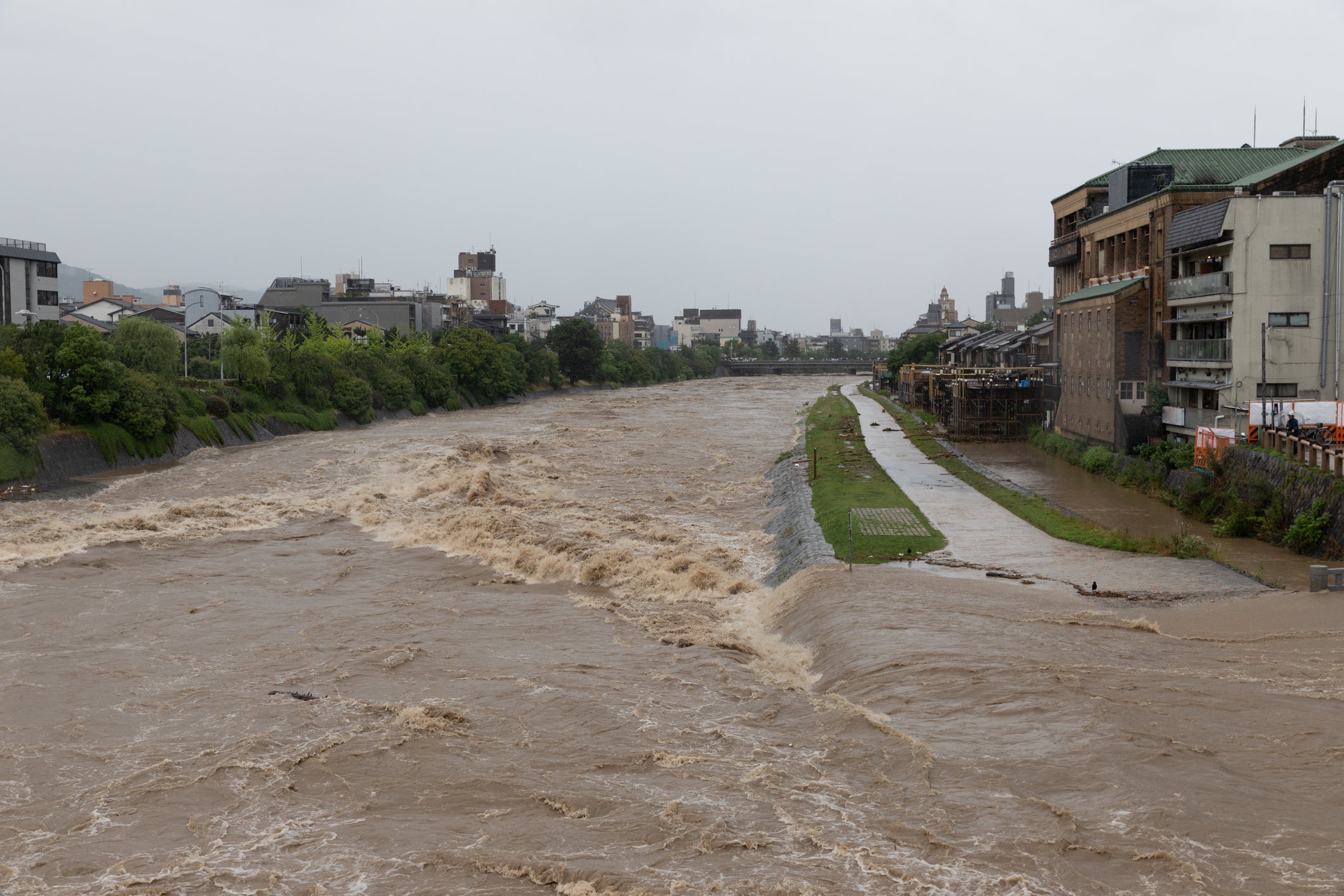Heatstroke and health management during disasters: Risks and countermeasures during high temperatures
table of contents
Introduction
1. Risk and mechanism of heatstroke
2.Is temperature the only thing you need to be careful about?
3. Key points to prevent heatstroke
4. Cooperation to prevent heatstroke during disasters
summary
Introduction
Hot weather conditions also increase health risks during disasters. Heatstroke is one example, and proper health management is essential, especially in times of disaster. This article focuses on heatstroke and the risk of high temperatures during disasters, and provides a detailed explanation of the importance of appropriate measures and health management.
1. Risk and mechanism of heatstroke
1-1 Risk factors for heatstroke
① High temperature and high humidity
In hot and humid environments, it becomes difficult for sweat from the body to evaporate effectively. This causes your body temperature to rise more easily, increasing the risk of heat stroke.
② Exercise and labor
Excessive exercise or work in high-temperature environments increases heat production in the body and promotes sweating. Excessive physical exhaustion due to long hours of exercise or work can easily cause disturbances in body temperature regulation.
③Elderly people and children
As children get older, their ability to regulate their body temperature declines, and children do not yet have sufficient body temperature regulation, which increases the risk of heatstroke in high-temperature environments.
④ Chronic illness or drugs
Factors that increase the risk of heat stroke include heart disease, circulatory system disease, dehydration, and the effects of certain medications.
⑤Constitution
Some people are more susceptible to heatstroke because their body temperature regulation functions vary depending on the individual.
1-2 Mechanism of onset of heatstroke
① Disturbance of body temperature regulation function
Normally, proper regulation of body temperature requires sweating to evaporate from the body's surface. However, while sweating increases in high-temperature environments or due to excessive exercise, evaporation cannot keep up and body temperature rises.
②Dehydration symptoms
Dehydration occurs because your body loses water through sweating. Dehydration worsens blood circulation, reduces body temperature regulation and increases the burden on organs.
③ Decrease in blood flow
Excessive sweating in hot environments causes water loss in the body and fluid in the blood. This can reduce blood flow and reduce oxygen supply to organs.
④ Collapse of thermal undressing reaction
Normally, when body temperature rises, blood vessels dilate and a "thermal undressing reaction" occurs that lowers body temperature by increasing blood flow to the skin. However, exposure to too much heat can disrupt this response and prevent the body from cooling down properly.
Imbalance of electrolytes in the body : Sweating causes electrolytes such as sodium and potassium to be lost from the body, which can affect nerve transmission and normal muscle function.
2.Is temperature the only thing you need to be careful about?
2-1 Not only temperature but also humidity is important
Even in high temperatures, if the humidity is high, sweat from the body does not evaporate effectively, making it easier for your body temperature to rise. For this reason, it is important to consider humidity along with temperature.
① Concept of heat index
The heat index is an index that takes into account both temperature and humidity, and is used to evaluate the risk of heatstroke. Generally speaking, the risk of heatstroke increases when the heat index exceeds 30 degrees.
② Effect of solar irradiance
The perceived temperature will be higher under direct sunlight. When sunlight is strong, it is easier to feel hotter than the actual temperature, increasing the risk of heatstroke.
③ Be aware that there are individual differences
The risk of heatstroke may vary for different people even at the same temperature, as each individual has a different perception of temperature and tolerance.
④ Caution for high-risk groups
The elderly, children, and people with chronic illnesses are more sensitive to rising temperatures than the general population and are at increased risk of heat stroke.
⑤ Influence of environmental conditions
Environmental conditions, such as being outdoors, in a non-ventilated area, or in a shielded area, also increase the impact of heatstroke.
2-2 Importance of health management during disasters
Preventing heat stroke and poor health : In the event of a disaster, people may need to stay in evacuation centers or temporary housing for a long time. High temperatures, unsanitary environments, and insufficient food and water can all lead to poor health. Appropriate health management helps prevent heatstroke and infectious diseases.
① Chronic disease management
People with chronic illnesses require appropriate medical management even in times of disaster. It is important to manage your health condition even when taking medications and accessing medical facilities is restricted.
②Psychological health
Disasters can cause psychological strain. Stress, anxiety, and depression caused by evacuation and disaster experiences can affect your health. Appropriate psychological support and communication are necessary.
③Ensuring nutritional intake
Lack of food or lack of proper nutrition can weaken your physical strength and weaken your immune system. It is important to ensure proper nutritional intake and maintain physical fitness.
2-3 Key points for health management during disasters
①Water intake
Living in high-temperature environments or in evacuation centers tends to lead to insufficient water intake. Make sure to stay hydrated frequently.
② Appropriate diet
They are prone to malnutrition due to food shortages and shelter conditions. Make sure to take emergency rations and foods with high nutritional value.
③Rest and sleep
Adequate rest and sleep can help your body recover and reduce stress. Even when the going gets tough, take time to rest.
③Hygiene management
Maintaining good hygiene helps prevent infectious diseases. Don't forget to wash your hands and keep your body clean.
④ Chronic disease management
It is important for people with chronic illnesses to know in advance how to bring medicines and access medical facilities.
⑤Psychological care
If you feel stressed or anxious, it is important to receive support through communication and try relaxation techniques.
⑥ Information collection
Information regarding health management during disasters may be provided by the region or local government. Collect accurate information and take appropriate measures.
3. Key points to prevent heatstroke
3-1 Water intake
Water is rapidly lost in high-temperature environments, so it is important to drink plenty of water. Don't forget to stay hydrated and bring a water bottle or plastic bottle.
In addition to drinking water, consider using oral rehydration solutions or sports drinks to replenish salt and minerals.
3-2 Appropriate clothing and sun protection
Choose cool clothing in bright colors and wear light clothing to reduce your body temperature.
Use a hat, parasol, and sunglasses to block direct sunlight and help regulate your body temperature.
3-3 How to spend time indoors
Indoors is a cooler place than outside. Consider staying indoors during hot weather and use air conditioners and fans to create a comfortable environment.
Even in evacuation centers and temporary housing, it is important to utilize cool areas indoors.
3-4 Restrictions on physical activity
Intense exercise or work in high-temperature environments increases the risk of heatstroke. Make sure to get adequate rest and use your physical strength without overdoing it.
3-5 Proper rest and sleep
As fatigue accumulates, it becomes difficult to regulate body temperature. Get proper rest and sleep to recover your physical strength.
3-6 Meals and nutrition
Appetite may decrease in high-temperature environments, so be sure to have frequent snacks and nutritional supplements. Consuming fruits and vegetables with high water content can help you stay hydrated and nourished at the same time.
3-7 Monitoring temperature and physical condition
Check temperature information such as the heat index, and be especially careful if a high temperature advisory has been issued.
Check the physical condition of yourself and your friends regularly, and take appropriate measures if the early symptoms of heatstroke appear.
3-8 Mutual assistance and information sharing
Collaboration with local communities and colleagues is important. The risk of heatstroke can be reduced by sharing information and helping each other.
4. Cooperation to prevent heatstroke during disasters
4-1 Information sharing
By sharing information about heatstroke prevention within local communities, many people can gain correct knowledge. Let's make efforts to spread awareness about the risks and countermeasures for heatstroke through flyers, posters, local events, etc.
4-2 Support for high-risk groups
It is important to support high-risk groups such as the elderly, children, and people with chronic illnesses with appropriate heatstroke prevention and health management.
Consider and support high-risk groups at evacuation centers and support centers.
4-3 Preparation of evacuation shelters and temporary housing
At evacuation centers and temporary housing, the risk of heatstroke can be reduced by providing adequate air conditioning, fans, and ensuring a cool place.
Let's help maintain air conditioning equipment and secure a cool place.
4-4 Providing necessary support
We help people stay in a suitable environment by providing essential supplies such as water, food, and oral rehydration solutions during times of high temperatures.
4-5 Health check and support
By checking on each other's health with your friends and neighbors, you can detect early symptoms early and take appropriate measures.
Provide appropriate support and referrals to medical institutions for people who are not feeling well.
4-6 Volunteer activities
By collaborating with local volunteer organizations and support groups to carry out initiatives to prevent heat stroke, we will be able to support more people.
4-7 Collaboration with the government and related organizations
It is important to collaborate with related organizations such as local governments, public health centers, and disaster response headquarters to receive information and support regarding heatstroke prevention.
4-8 Emergency response
Emergencies require quick action. If an evacuation order or warning is issued, quickly convey the information to those around you and take appropriate measures.
summary
High temperature environments during disasters are a factor that increases health risks such as heat stroke. Appropriate health management and heatstroke prevention are important elements that support safe evacuation life during disasters. Individuals and local communities need to work together to reduce the risk of heat stroke and protect health.








